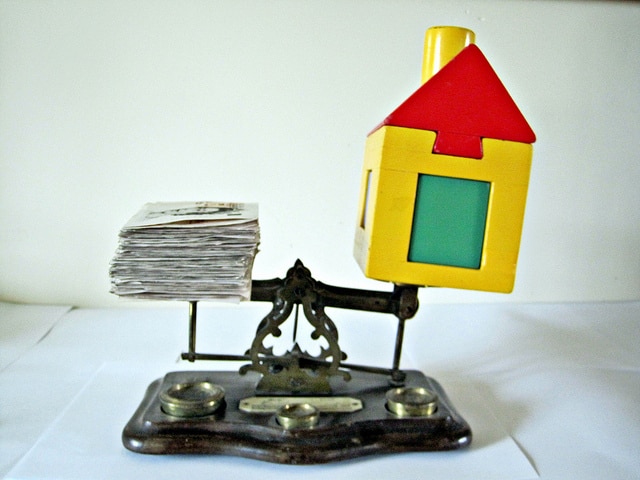[vc_row][vc_column][vc_custom_heading text=”How Much Home Can You Really Afford?”][vc_single_image image=”527″ img_size=”full”][/vc_column][/vc_row][vc_row][vc_column][vc_column_text]Whether you already own a home or are new to buying a home, getting caught up in house hunting is common. When you admire a fully equipped kitchen or marvel at a walk-in closet that’s bigger than your bedroom, it’s tempting to decide that a hefty mortgage is worth the sacrifice.
Before you make an offer, consider the consequences of being house rich and cash poor. Determining the right price range for your dream home ahead of time makes it more likely you’ll qualify and helps you avoid overextending yourself.
Try these steps for determining how much mortgage you can comfortably afford:
Determine debt-to-income ratio
Your debt-to-income ratio (DTI) is the amount of your debt compared to your income. Mortgage lenders take a close look at this figure when determining how much mortgage you can afford and how much of a loan they will extend you. This ratio is determined by adding up your revolving debt, including credit card minimums, and car, student and other loans. The lower your debt in comparison with your income, the more home you can afford.
Determine the total cost of buying the home
In addition to the mortgage payment, there are a wide variety of one-time and continuing costs associated with buying a home, including the down payment, potential closing costs, property taxes and insurance, homeowner’s association fees and utilities. All of these costs totaled should not be more than 28 percent of your gross income.
Add your housing costs and debt load
In order to get an accurate picture of the amount of money you must generate each month in order to keep paying your mortgage and other loans, add up your total debt and housing costs. This figure should not total more than 38 to 40 percent of your gross income.
Factor in maintenance costs
It’s not a matter of if your home will require maintenance; it’s a matter of when. All homes require upkeep, and some home repairs can be costly, such as roofing. Expect to need to pay about 1 percent of the cost of your home per year on repairs. This means that if you pay $400,000 for a home, you will want to set aside $4,000 a year for maintenance. In terms of budgeting, this means about $333 per month.
Consider life circumstances and lifestyle
Factors such as your financial obligations to others and spending habits also play a part in how much home you can actually afford. When you have dependent children who rely on you financially, this will affect your monthly cash flow. And if your lifestyle is such that you are used to spending a substantial amount of discretionary income, this must also be considered in order to get a true picture of how much mortgage you can really afford. On the other hand, if you are frugal with your money and do a good job of budgeting, you can probably afford a higher mortgage.
When examining your life circumstances and discretionary income, be realistic and honest with yourself. If you’re used to spending $400 a month on activities like traveling and eating out, it’s highly unlikely you’ll be able to cut that amount to zero so you can pay your mortgage. If you are truly committed to buying a home, however, it is possible to reduce your discretionary income and make home ownership a reality.
Keep these tips in mind for ensuring that you purchase a home that fits your financial profile, and you’re likely to soon find yourself picking up the keys to your dream home.
“How Much Home Can You Really Afford?” was written by Julie Bawden-Davis, a staff writer for SuperMoney. Her mission is to help fight your evil debt blob and get your personal finances in tip top shape.
Copyright © 2013 Julie Bawden-Davis
Photo: Images_Of_Money[/vc_column_text][/vc_column][/vc_row]

